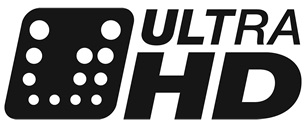This has been one of those “techie” weeks, when technology intervened to cause disruption. On Monday morning, the “five minutes” that our power supply needed switching off so that the power company could give us a smart meter turned into a couple of hours between powering down and getting everything up and running.
 On Tuesday, my PC died, very severely after I updated some drivers – it was so broken, that there was no choice but to restart the system from factory process. “No problem”, I thought, as I had a system back up from a couple of weeks ago, and important data is backed up to the network. 8 hours later, it turned out that the back-up system that I have used for years (and has got me out of trouble before) is very happy to back up 64 bit systems, but can’t restore them! Sadly, as every step in the process seemed to hit a “gotcha”, it took about 8 hours to realise that it was not fixable. Time to bite the bullet and re-build my system from scratch. Thanks, Microsoft!!!
On Tuesday, my PC died, very severely after I updated some drivers – it was so broken, that there was no choice but to restart the system from factory process. “No problem”, I thought, as I had a system back up from a couple of weeks ago, and important data is backed up to the network. 8 hours later, it turned out that the back-up system that I have used for years (and has got me out of trouble before) is very happy to back up 64 bit systems, but can’t restore them! Sadly, as every step in the process seemed to hit a “gotcha”, it took about 8 hours to realise that it was not fixable. Time to bite the bullet and re-build my system from scratch. Thanks, Microsoft!!!
Then, yesterday, our network started to do some strange things. Was it the domain controller, or the virtual machines or…? It turned out to be simple network switch that had decided to malfunction. It was getting very hot and was clearly dropping packets, a problem that was hard to diagnose although easy to fix, but that was another couple of hours lost. The only consolation was that the problems would have been much worse if we had been attending ISE as we will be next week.
The superstition in the UK is that “these things happen in threes”, so I’m prepared to be superstitious this week.
Marketing BS?
Anyway, the bit of news that caught my attention this week was the announcement of the Digitaleurope “UltraHD” logo. This has taken a lot of time – the “initial findings” were more or less the same and were finalised in October 2013, so there has clearly been a lot of haggling over the precise wording. One of my US-based friends has reacted by saying “From what I can tell, you pay Digitaleurope some bucks (or pounds or euros) and you can slap the misleading logo on any piece of crap you can source in Shenzhen”.
 That’s not quite true, as the logo does require a full signal path at UltraHD as well as HDCP and an UltraHD imager. The sets have to support 60P, although the chroma sub-sampling spec (4:2:0 is allowed) that will cause some to get upset. These requirements mean that some of the really low end sets that have been developed that use, for example, 3840 x 1080 panels or use 1920 x 1080 electronics and controllers behind an UltraHD panel should not be able to carry the logo (although it’s unclear how this will be policed).
That’s not quite true, as the logo does require a full signal path at UltraHD as well as HDCP and an UltraHD imager. The sets have to support 60P, although the chroma sub-sampling spec (4:2:0 is allowed) that will cause some to get upset. These requirements mean that some of the really low end sets that have been developed that use, for example, 3840 x 1080 panels or use 1920 x 1080 electronics and controllers behind an UltraHD panel should not be able to carry the logo (although it’s unclear how this will be policed).
My friend also said “This is marketing bs!”. On that, he’s precisely accurate. TV is not an “early adopter” market, it’s a market of the majority, who are very conservative. Consumers, especially those in Europe, buy TVs for the lowest price, but mainly with a minimum of risk. The logo will help them to feel confident that they are buying a display that will have some reasonable life and that is its purpose. The HDReady logo was a significant marketing success on much the same basis.
It’s more telling that Digitaleurope has not come out yet with an UltraHD TV logo as the new logo is for displays, not TVs, so it doesn’t include any tuner or codec requirements. As we have reported elsewhere, HEVC is still settling down and it’s not yet completely clear what the bit rates etc that the broadcasters or OTT providers will use. On this basis, it will be some time before we see an UltraHD TV logo.
Of course, before we see that kind of logo for complete TVs, the broadcasters and particularly the EBU needs to set out what public service broadcasters in Europe should do in terms of frame rates, colour gamut and frame rates. That’s not a trivial question, and there is a lot of contention, so don’t hold your breath. Even at the IBC press conference in September, we pointed out that the EBU’s powerpoint on UltraHD did not include any recommendations or discussion of colour gamut. So there is still some way to go, but what Digitaleurope has done will help its members, the set makers, to sell sets and help buyers to avoid the worst products. On that basis, it has some value, in my view.
Bob

